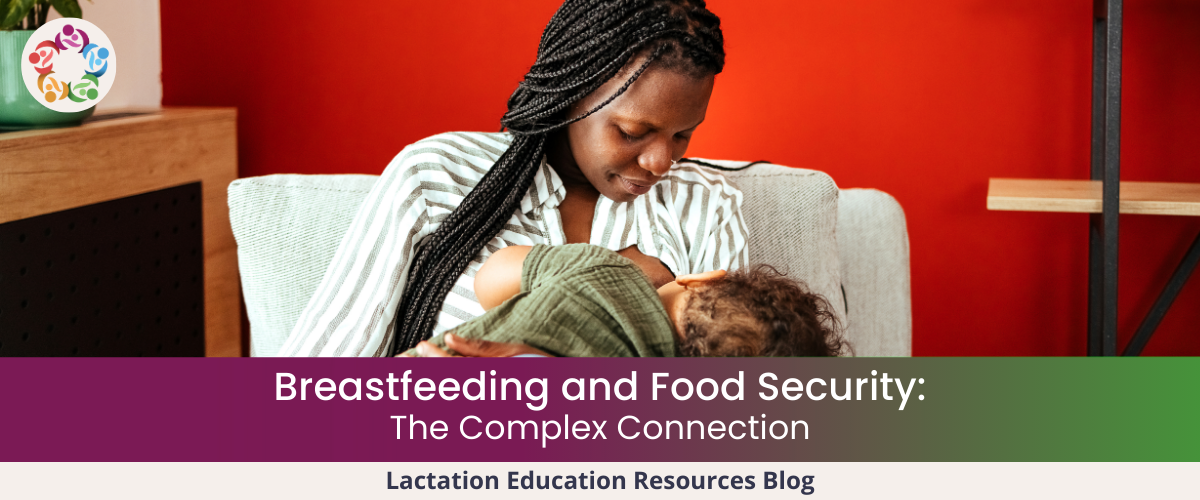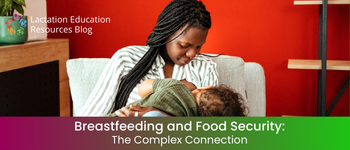

Both in times of calm and in times of crisis, exclusive breastfeeding equals first food security. Having a safe, reliable source of nutrition and protection against disease protects babies in any circumstance—and especially when there is food insecurity.
However, the relationship is more complex than you might think.
That’s because already having food security is a predictor of being able to exclusively breastfeed. And conversely, being in the midst of food insecurity makes it less likely that a family will be able to access the support and resources needed to exclusively breastfeed.
Now as never before, action and advocacy are needed to protect, promote, and support the structures that help all families to meet their breastfeeding goals, in every part of the world.
UNDERSTANDING FOOD INSECURITY
Around the world, one in three people lives with food insecurity.
The distribution of people living with food insecurity is highly unequal, with food insecurity disproportionately affecting families living in low- and middle-income countries.
However, the rise in global crises—pandemics, climate change, and conflict—is increasing the threat of food insecurity in all parts of the world, and no family is immune.
The problem of food insecurity is complex and multifaceted. Inadequate access to affordable healthy food creates the burden of double malnutrition—meaning both undernutrition and overnutrition become a threat.
Even in very poor areas of the world, the low cost and aggressive marketing of ultraprocessed food contribute to overnutrition, while in the same locations, many people are facing undernutrition.
WHY FOOD INSECURITY MAKES BREASTFEEDING HARDER
Parents who are facing food insecurity are less likely to exclusively breastfeed their children, but research shows that this gap is not reflective of families’ desire or intention to exclusively breastfeed.
Instead, structural inequities mean that families facing food insecurity are more likely to also be facing stressful conditions and lack of access to skilled lactation support. Without skilled support, they are more likely to worry that they have insufficient milk, which often leads to introducing formula and a true decline in milk supply—while the need to buy formula adds even more financial burden.
They are also more likely to need to return to work early and to face hostile work environments that make pumping difficult, making exclusive breastfeeding a daunting challenge.
SOLUTIONS FOR A FIRST-FOOD SECURE FUTURE
What can be done to ensure that all families are able to give their children the first-food security that breastfeeding provides?
There is no easy answer, but there are actions that lactation care providers, researchers, and policy leaders can take that hold promise. Here are a few:
Key Policy Steps
- Put breastfeeding at the center of policy action
- Protect, promote, and support breastfeeding across work, health systems, and in marketing regulations
- Ensure integration with emergency preparedness and response
Key Advocacy Steps
- Engage in advocacy opportunities to increase public and political awareness of the importance of breastfeeding in ensuring food security
- Recognize interconnections between local and global contexts
Key Research Steps
- Engage in research to learn more about how people make infant feeding decisions in light of household food insecurity
- Engage in research to target the evidence-based interventions that will scale up breastfeeding, enabling structures and environments
READY TO LEARN MORE?
Our new course, Strengthening Breastfeeding as a Key Pillar of Food Security: Global Lessons, explores this topic in depth. Cećilia Tomori, PhD, MA, BA, internationally recognized anthropologist, public health scholar, and breastfeeding expert, examines first food security through three case studies focusing on the COVID-19 pandemic.
She explains how pre-existing variables intersected with the pandemic in Honduras, Pakistan, and the United States to impact breastfeeding, first food security, and the health and safety of birthing and lactating parents and babies. You’re guaranteed to come away with a clear understanding of the situation and how you can take action to help.
Save 15% On This Course, During April Only!
To claim your discount, enroll in Strengthening Breastfeeding as a Key Pillar of Food Security between now and April 30, 2025, and enter the coupon code Apr2025COTM at checkout.
Enroll Now